It’s warming up here in Vancouver. A few days of brilliant blue skies and the neighbours have begun hauling out their barbecues. I, on the other hand, jump at the first chance to fling open the doors and windows and cook up a guilty pleasure – dried salt fish.
Why wait for warm weather, you ask? Well, there’s no denying the powerful odour of salt fish cooking. At its best, it’s the briny, pungent smell of a beach at high noon and low tide. Not the cool shores of the Pacific Northwest, mind you. So, rather than risk infusing the furnishings with the ineffable air of the baking sands of a tropical beach, littered with flotsam and jetsam, I bide my time till the balmy breezes blow.
In fish markets in Coorg, you’ll find a variety of dried shrimp, both fresh and saltwater, various kinds of salt tuna, anchovies, sardines, ray, and shark* (cautionary tale below). These usually come from nearby coastal Mangalore and Kerala. Chirau (shark), sigari (shrimp), and mathi (sardines) were our favourites, and my grandmother had many delicious ways of serving them up. Dried sardines could be curried with chunks of potato, or served crisply fried. Tiny dried shrimp perked up simple vegetable palyas, or were dry roasted and pounded with hot green chillis and lime juice to make a spicy chutney to eat with akki ottis.
But one recipe stood out in its bold combination of what are perhaps two of the most polarizing foods – salt fish, and bitter gourd. If, like, me, you happen to love both, you’re in for a treat. For the rest, well, I guess you can look on in wonder!
The flavours in this dish are reminiscent of combinations found in some Southeast Asian cuisines – salty, bitter, tangy, a hint of sweetness from the tamarind and onions, and boatloads of umami.
Grandma’s fish of choice here was the assertive and meaty chirau, (as mentioned earlier, this is no longer a good choice) to face off the intensity of kaipakké (bitter gourd). Choose any similarly strongly flavoured fish like tuna, or use shrimp, if you like. I chose to use a locally sourced variety of salt whitefish – not the famous (and infamously overfished) Newfoundland Salt Cod that empires were built on.
Onakk meen with kaipakké
Salt fish with bitter gourd
- 250 gms bitter gourd (trimmed weight)
- 250 gms onions, sliced
- 250 gms dried fish (or use about 100 gms dried shrimp in this recipe)
- 2-3 green chillies, slit
- 3-4 tbsp oil
- 1 tbsp ground coriander
- 2 tsp red chilli powder or to taste
- 1/2 tsp turmeric
- Grind together 1 tsp dark roasted cumin and 1 tsp mustard seed, roasted until it sputters
- 1 tsp kachampuli or 2 tbsp tamarind extract or a generous squeeze of lime juice over the finished dish
- Salt if necessary
Prepare the fish and bitter gourd:
Thicker cuts of dried salted fish should ideally be soaked for 10 – 12 hours, in several changes of water to allow the salt to properly leach out. If you need to speed things up, pour hot water over the dried fish and let it soak for about an hour. Change the water a couple of times. When the salt fish has softened enough to slice easily, cut or flake it to the size you want. Rinse, and drain. Meatier fish like king mackerel may need to be cooked briefly to soften it. Add a little turmeric to the cooking water. Shrimp need careful picking through and cleaning to make sure no grit remains.
Trim the ends of the bitter gourds, then slice down the length. If the seeds are tender, leave them in. Otherwise, scoop them out and slice the gourd into even half-rings about 1/2 cm thick. Parboil the bitter gourd to rid it of some of the bitterness. Do not overcook. Drain and set aside.
Heat the oil in a deep pan, kadhai or wok. Add the onions and slit green chillis. Fry till they soften.
Add the bitter gourd, fish, and all the dry spices. Mix thoroughly and cook on medium heat for 3 – 4 minutes. Add two cups of hot water, cover, and cook on medium-low heat for 20 – 25 minutes or until the fish and bitter gourd are tender, and the onions have broken down to thicken the sauce. Add more water if necessary. Check if additional salt is needed, then add the tamarind (I prefer tamarind in this dish) stir, and cook for a few more minutes.
Best eaten with akki ottis or steamed rice.
For a delicious vegetarian option, follow the same recipe (minus the fish, of course) and add a few cloves of crushed garlic along with the onions, and 2 – 3 tbsp of jaggery towards the end of cooking.
Vary the ratio of bitter gourd, onions and fish to your taste. I like to use equal quantities and the result is surprisingly mild.
* Today shark is not a sustainable option and despite there being no ban on shark fishing, they are on the endangered list. Traditionally, fishermen in India would utilize all parts of the shark, but a lucrative export market for shark fin has led to overfishing, and more disturbingly, the spread of a barbaric practice of “finning“. For more information, please take a minute to visit this page and do consider signing the petition to support a very important cause.
The picture of shark meat (not shark fin) in this post shows the kind commonly available in markets in India, and I have included it here for reference only.

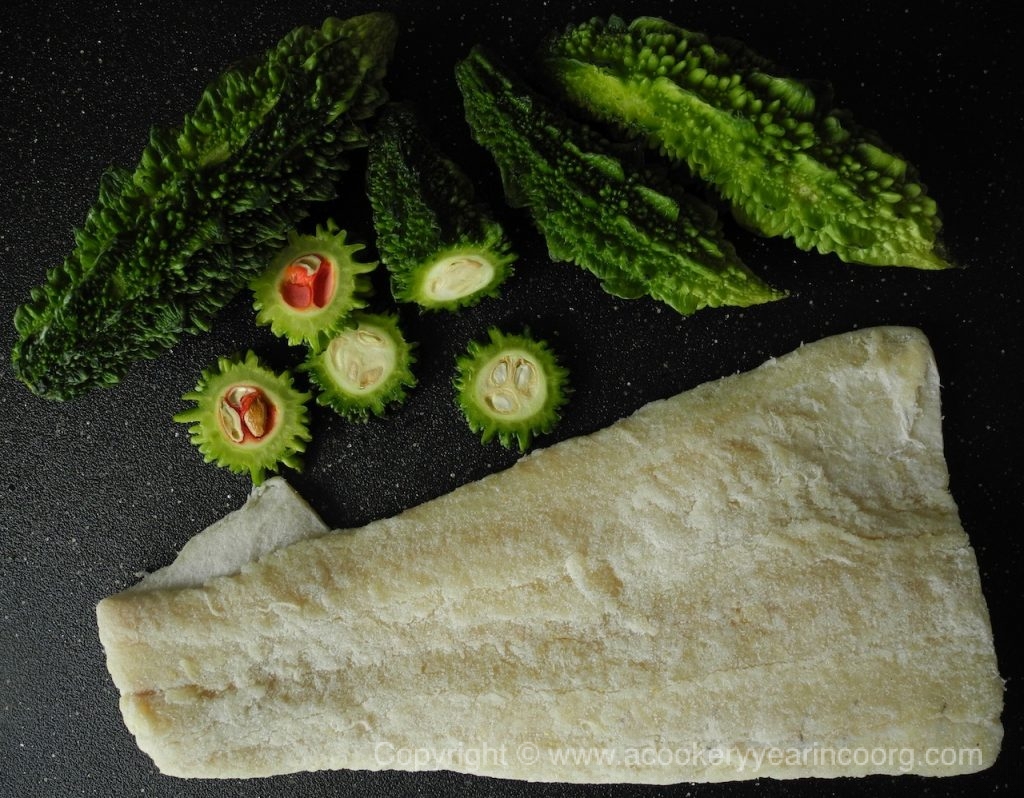
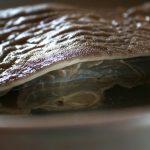
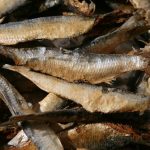
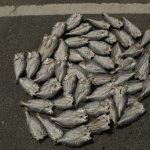

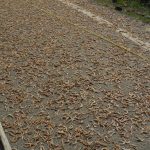
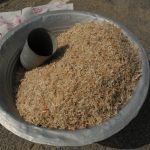
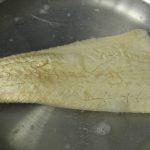
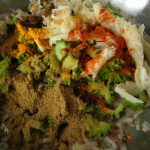
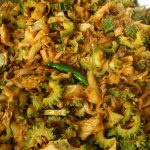
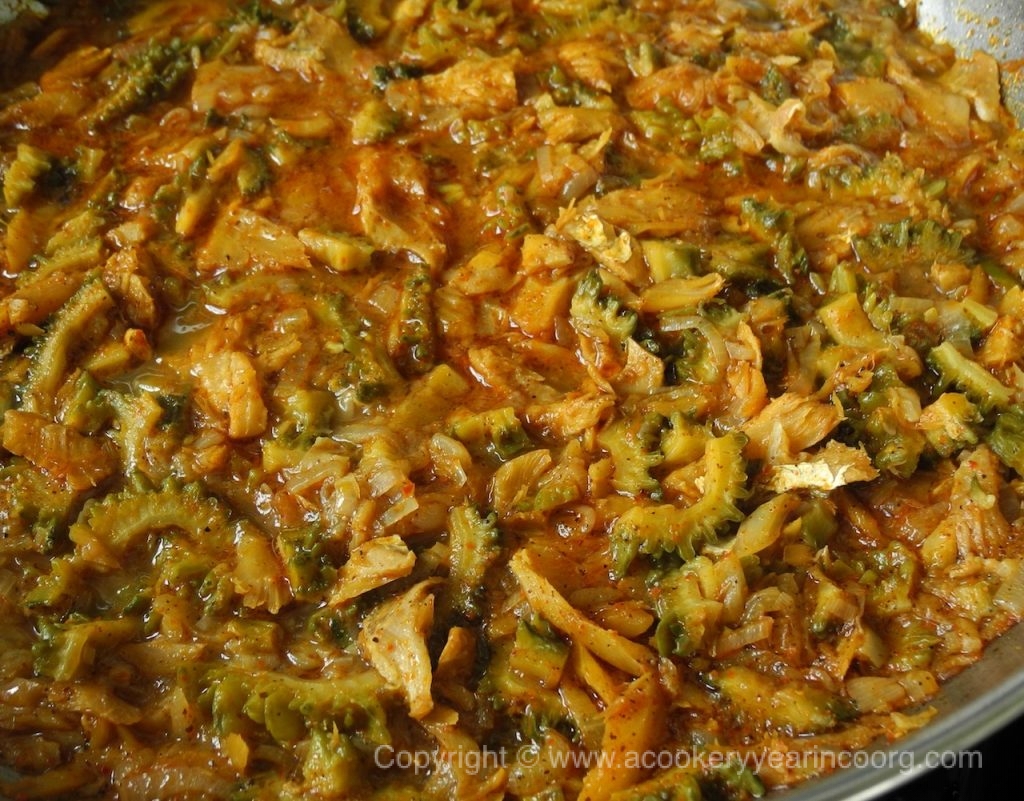
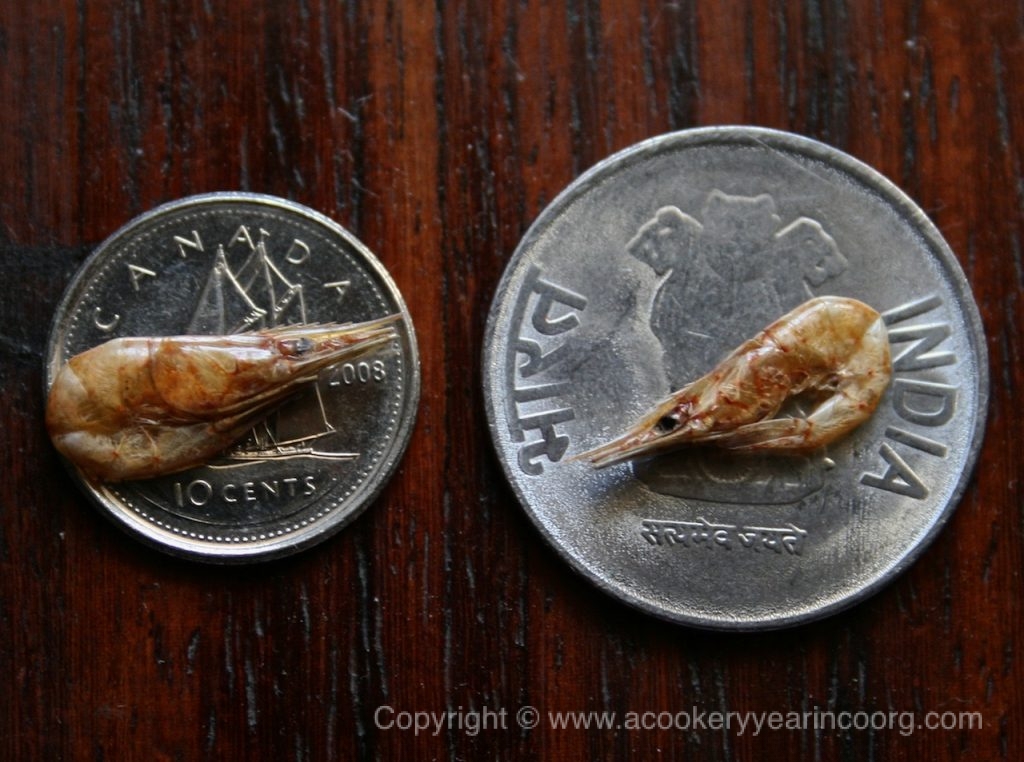
This Onakk meen recipe is one of the best, I love it with bittergourd. The only time I ate bittergourd was with Onakk meen. I guess I have to go scouting for the Onakk meen at Surabhi over the weekend, that is only place I guess I’ll find it or may be in T&T even.
Each and every one of your posts bring a lot of lovely memories and I guess every Kodava home can identify with it in some form or another. I love going back to your blog, it is exciting to discover the new things that you come up with.
Vindhya, this is one of my favourites! Surabhi has some onakk meen, but if you can get to Thurga, they have a great selection. T & T has very good dried shrimp, and the Italian store on Hastings has the kind of white fish I used in this particular recipe. Get set, go! 🙂